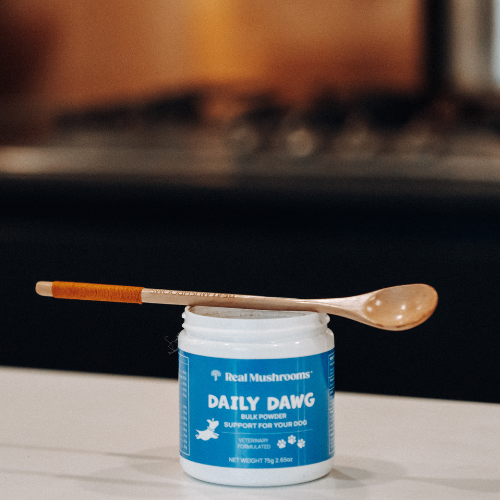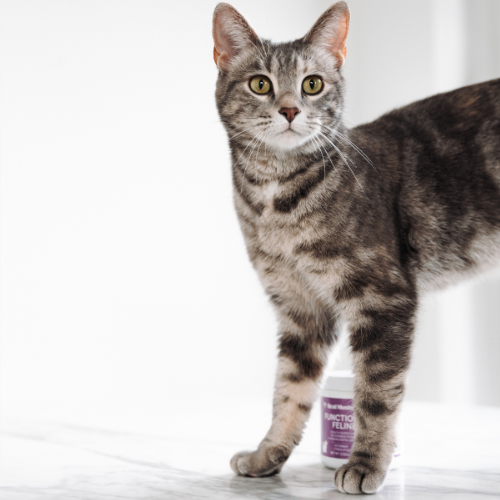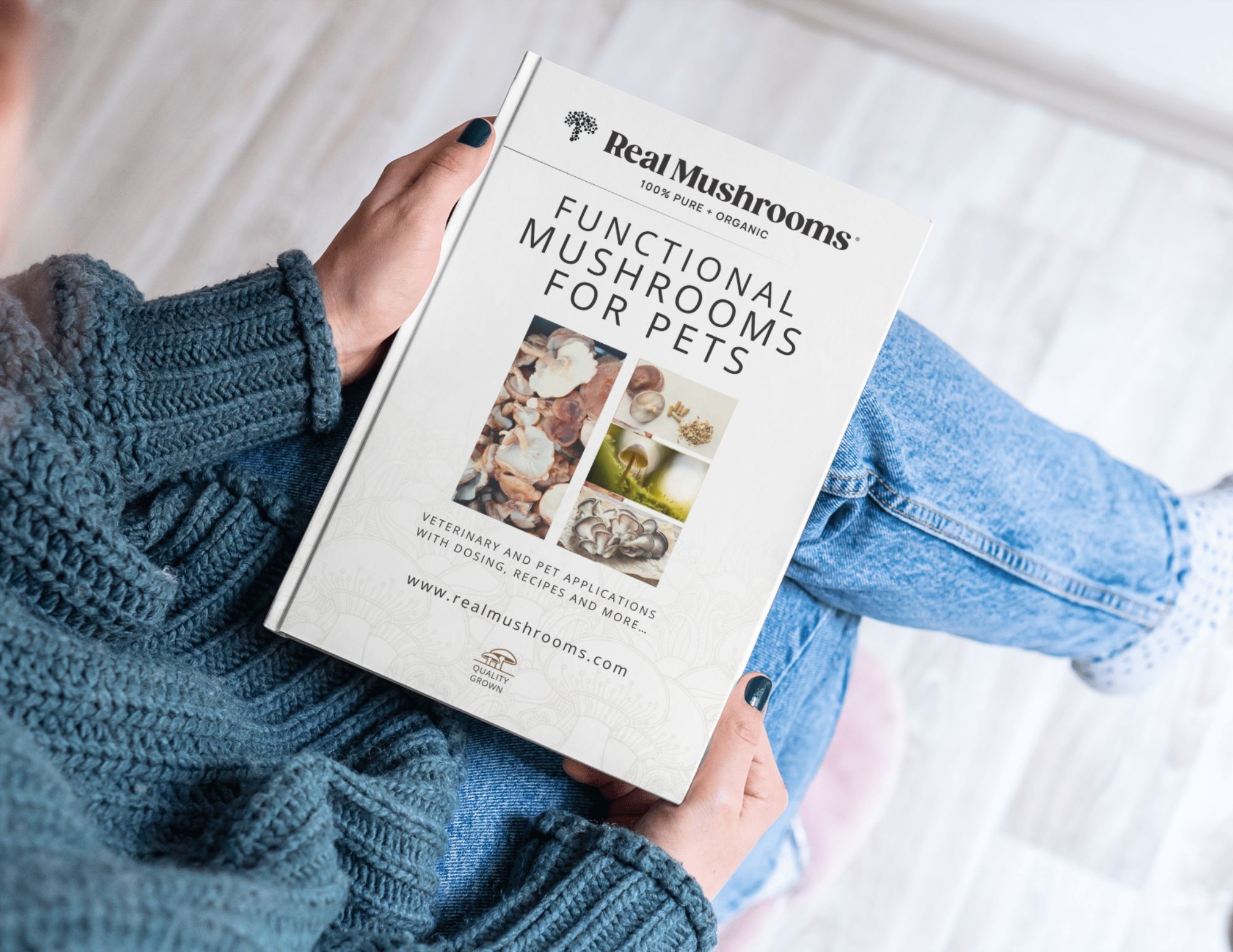Menu


I am asked this, commonly and frequently:
"How much of a given functional mushroom should I give my pet?"
The answer to this question is often not as simple as “just give this amount to your pet,” so read on to learn more.
We give our pets functional mushrooms to support their physical and mental health and longevity.
Functional mushrooms can provide long-term benefits to your pet’s wellbeing. Consistent daily use can help keep your pets healthy and primed to better respond when the immune system is called into action.
For wellness benefits, we suggest following the administration recommendations I’ve listed on the bottle of our pet products.
It’s a well-known fact that the benefits of mushrooms increase substantially the longer you take them, even when the amount being consumed is relatively small.
Regular and long-term ingestion of mushrooms enables the potent beta-glucans all mushrooms contain to “train” your pet’s immune system to respond more quickly and effectively to challenges by infectious organisms, cancer cells, and inflammatory stimuli. The consistency of regular administration of mushrooms is actually more important to your pet’s health than the amount of mushrooms being given.
 Dr. Rob suggests following the dosing directions on the label.
Dr. Rob suggests following the dosing directions on the label.A small amount of mushroom given for months will work better over this time period than a large amount of mushroom given for only two weeks. Always be consistent and regular with your mushroom administration to your beloved fur babies!
Mushrooms can have an immediate effect because of some of their components, such as their terpenes, flavonoids, ergosterol, and nucleosides, to name a few. They are considered functional foods or “super” foods because they both nutritionally support your animal friend, as well as “functionally” support systems like the immune system, nervous system, metabolic system, endocrine systems, as well as specific organs.
Mushrooms can be liver, kidney, lung, and adrenal protective, and supportive, all at the same time. This is not a “drug-like” effect, because mushrooms are not drugs. If they were, then the FDA would need to get involved with their approval as a drug. This is also why we avoid the use of the word “dose” with mushrooms.
The word “dose” implies a specific amount of a mushroom that would be given to a specific patient’s weight to treat a specific disease or symptom.
Functional mushrooms are not drugs, they are considered “Biological Response Modifiers” (BRM). [1] This means they have a wide range of effects that are not directly caused by the amount you give but by the longer-term interaction of the mushroom with the bodily systems and organs referred to above.
It’s important to note that mushrooms, historically, have been used to address health challenges. If, unfortunately, your dog, cat, or horse does have health challenges, it is safe to give larger amounts of functional mushrooms.
The use of a larger amount of functional mushrooms each day has shown improved benefits over smaller daily amounts of mushrooms in published epidemiological and controlled studies of human and laboratory animals. [2] Consistency with the regular daily administration of functional mushrooms can help to improve your four-legged friend’s health status, especially when challenged by serious health problems.
Functional mushrooms are extremely safe to use since they’re food and you can't give too much. Sometimes it's better to give more, to be sure your dog is getting enough if you are using the mushrooms to help with a serious condition.
 Giving your pets a little more than the suggested dosage is okay, as mushroom intake is a good thing.
Giving your pets a little more than the suggested dosage is okay, as mushroom intake is a good thing.Rarely, some pets, and some people, can be sensitive to some of the components found in mushrooms, resulting in a hypersensitivity reaction (allergic) or digestive side effects such as soft stools and diarrhea or more rarely, vomiting. These reactions can occur even when a small amount of mushroom is ingested.
Administration recommendations are just starting points to guide you in the long-term effective use of the mushrooms. It’s always a good idea to start with the amounts recommended on the Real Mushroom product label for your pet’s weight.
Starting with this lower amount of mushroom than the optimal amount for your pet’s condition is smart. It may take some pets a little more time to adjust to something new, like adding mushrooms to their diet, and by starting with a smaller amount, you are likely to avoid any side effects. With smaller amounts, side effects are fewer as well.
After a week or two to accommodate the new mushroom in their program, you can then increase the amount you are giving by 2-4 times to better help support your pet’s health and wellness.
Ask your veterinarian for advice on how much to give your pet, and if your veterinarian is unsure, let them know that I am more than willing and available to advise them on how much they should recommend you give to your beloved four-legged friend.
Disclaimer: The information or products mentioned in this article are provided as information resources only, and are not to be used or relied on to diagnose, treat, cure, or prevent any disease. This information does not create any patient-doctor relationship, and should not be used as a substitute for professional diagnosis and treatment. The information is intended for health care professionals only. The statements made in this article have not been evaluated by the Food and Drug Administration. Any products mentioned are not intended to diagnose, treat, cure, or prevent any disease. The information in this article is intended for educational purposes. The information is not intended to replace medical advice offered by licensed medical physicians. Please consult your doctor or health practitioner for any medical advice.

– Plus, Enjoy Exclusive Tips and Updates with Our Real Mushrooms for Pets Newsletter